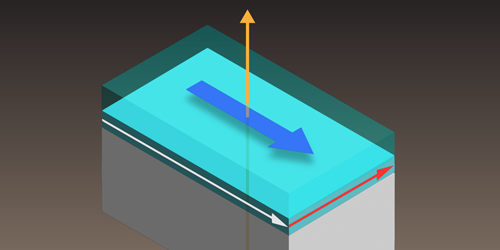An Exotic Fractional Quantum Hall State
At low temperatures and in high magnetic fields, a 2D system’s behavior is no longer governed by the kinetic energies of electrons. Instead, it is driven by electron-electron or hole-hole interactions, leading to exotic quantum phenomena such as fractional quantum Hall states. These states are commonly observed when only a fraction of an energy level or orbital is filled by carriers. Usually, the fraction has an odd denominator, however, although rare, even-denominator states occasionally appear at higher filling levels (for example, 5/2), but their origins remain unclear. Chengyu Wang at Princeton University and his colleagues now report an unexpected even-denominator state in 2D gallium arsenide (GaAs), which could help to identify the origin of these rare states [1].
The researchers created a quantum well by sandwiching a 20-nm-thick layer of GaAs between two layers of aluminum arsenide. They designed the quantum well’s energy band gaps to confine a high density of holes, which interact in 2D GaAs more strongly than electrons. After cooling the sample to about 20 mK, the researchers measured the resistance of the device while varying the carrier density and the strength of a magnetic field, which determine the GaAs layer’s filling factor. Observing a specific set of resistances—a local minimum along the current direction and a plateau in the perpendicular direction—under conditions that corresponded to a filling factor of 3/4, they confirmed the presence of this rare even-denominator state.
Wang and his colleagues suspect that the 3/4 state emerges from interactions between magnetic flux and electrons and holes, but they say that further research is required to fully understand the state. Ultimately, better understanding could lead to applications in fault-tolerant topological quantum computing.
–Rachel Berkowitz
Rachel Berkowitz is a Corresponding Editor for Physics Magazine based in Vancouver, Canada.
References
- C. Wang et al., “Even-denominator fractional quantum Hall state at filling factor v = 3/4,” Phys. Rev. Lett. 129, 156801 (2022).




